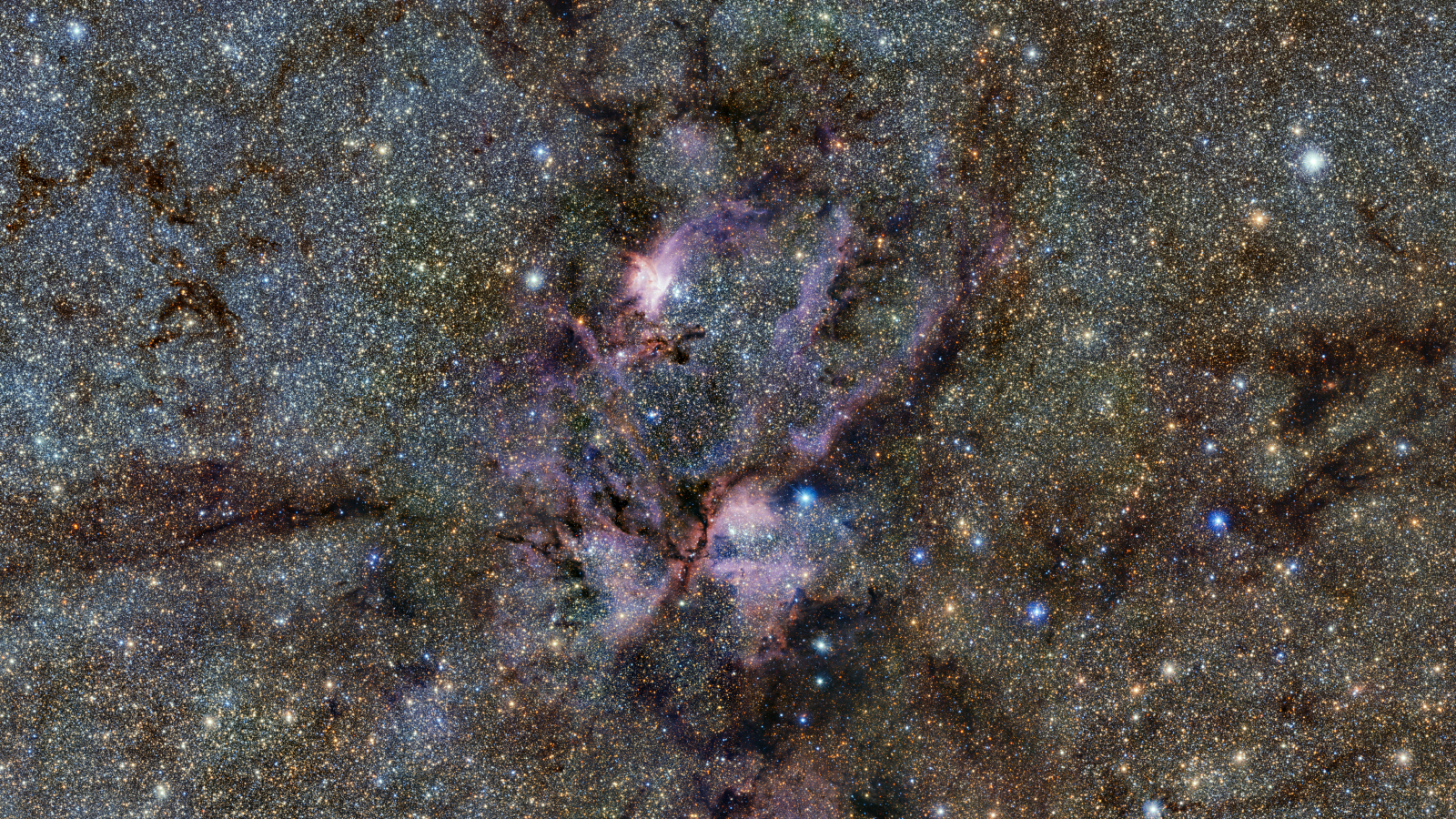Space photo of the week: Hot young suns glow blue, white and orange in the Lobster Nebula
The massive star-forming complex known as the Lobster Nebula is part of the biggest infrared map of the Milky Way galaxy ever created.

What it is: NGC 6357, a diffuse emission nebula
Where it is: 8,000 light-years away, in the Scorpius constellation.
When it was shared: Sept. 26, 2024
Why it's so special: NGC 6357, also called the Lobster Nebula, is busy giving birth to huge stars. This massive star-forming complex's dense core — which stretches across 400 light-years — is a tangle of dust tendrils surrounding hot young stars and glowing clouds of gas, so much so that it's impossible to see what's going on inside the stellar nursery with an optical telescope.
The stunning image, initially taken in 2013 and available as a zoomable version, was revealed this week as one piece of a jigsaw that took 200,000 separate pictures and 13 years to compile — the biggest-ever infrared map of the Milky Way galaxy.
Infrared-sensitive cameras are critical in revealing what's happening in deep-sky objects like NGC 6357. To take the images that would make up the vast Vía Láctea (VVV) survey, astronomers used the Visible and Infrared Survey Telescope for Astronomy (VISTA) survey telescope at the European Southern Observatory’s Paranal Observatory, located in Chile’s Atacama desert. The VVV survey’s goal was to scan the Milky Way to discover its structure and thus explain how it formed.
Related: 38 jaw-dropping James Webb Space Telescope images
Get the world’s most fascinating discoveries delivered straight to your inbox.
VISTA's camera is sensitive to infrared light, which enables it to capture cold features that glow only in previously unseen wavelengths of light, such as gas and dust. This gives astronomers the ability to peer through dust clouds, which block the view of regular optical telescopes, and see proto-stars within.
NGC 6357 is known as an emission nebula, a region of space where gas is ionized by extreme ultraviolet radiation, which, in the case of NGC 6357, is caused by its massive young blue-white stars. Those stars are found in Pismis 24, an open star cluster within NGC 6357 that contains some genuinely massive stars. According to NASA, Pismis 24 was home to Pismis 24-1, a bright young star thought to be 200 to 300 times more massive than the sun. However, when the Hubble Space Telescope studied it in 2006, it found two stars, each about 100 times the sun's mass, orbiting each other.
For more sublime space images, check out our Space Photo of the Week archives.

Jamie Carter is a freelance journalist and regular Live Science contributor based in Cardiff, U.K. He is the author of A Stargazing Program For Beginners and lectures on astronomy and the natural world. Jamie regularly writes for Space.com, TechRadar.com, Forbes Science, BBC Wildlife magazine and Scientific American, and many others. He edits WhenIsTheNextEclipse.com.


